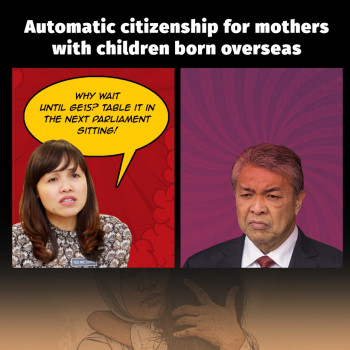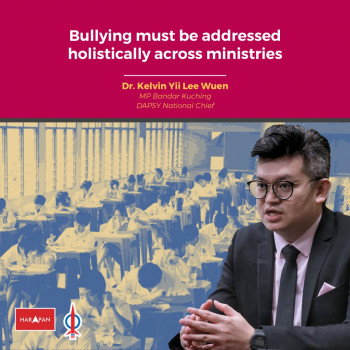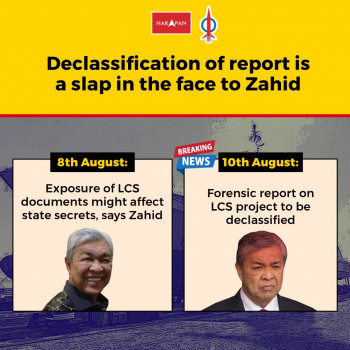By Christopher Fernandez
 There is a dire need by the governing authorities to formulate a comprehensive Transport Master Plan with the aim of ensuring a sustainable environment. Under the Government Transformation Plan (GTP), several agencies have been entrusted in creating a systematic public transport system in the country.
There is a dire need by the governing authorities to formulate a comprehensive Transport Master Plan with the aim of ensuring a sustainable environment. Under the Government Transformation Plan (GTP), several agencies have been entrusted in creating a systematic public transport system in the country.
However, the National Key Results Area on Urban Public Transport, if read carefully, with input from all quarters, shows that the government has failed to address the common complaints facing the public transport system such as reliability, journey times, comfort, convenience, accessibility and connectivity.
In the middle of 2010 the Land Public Transport Commission (LTC) was formed to become a single contact point for policy planning and regulatory oversight. The LTC was established to resolve the problems of divisional jurisdiction and limitations on matters of land transport, as there are many agencies involved, each with its own complex and complicated vision and aspiration, in matters governing the public transport sector.
Prior to the setting up of the LTC, there were 15 (fifteen) agencies involved in the public transport sector which was supposed to have been deliberately done so as to cause confusion and to create the opportunity to fuel corruption and abuses on a widespread scale from the time of the era of the Mahathir regime as overlapping powers of authority were exercised by the governing authorities.
It is precisely the unnecessarily complex and complicated structure put in place by the BN government of overseeing the inland transport system in the country that is responsible for a grossly inefficient and badly managed public transport system which has caused many Malaysians to opt for private transport.
Unfortunately, vehicles have been recognized as a significant emitter of carbon (carbon dioxide and monoxide) and other greenhouse gases, as well as pollutants such as nitrogen, sulphur dioxide and particulate matters. These are significant factors that contribute to smog and acid rain as well as being carcinogenic or cancer-causing to humankind.
Rapid industrialization of the nation over the last three decades has witnesses a significant rise in air pollution.
With the increase especially of private vehicle ownership, their numbers swelling by dramatic growth over the last decade owing to the popularity of national cars, Malaysia has registered a big drop in the quality level of air.
The Air Pollution Index over the last few decades has steadily been increasing owing to the pollutants that are being increasingly released into the atmosphere. This has caused Malaysia to contribute its fair share to the ozone layer being depleted and the subsequent changes to the climate especially global warming.
Experts state that the Malaysian government must learn to understand that the “slow approach” of increasing efficiency to combat pollution has proven to be more effective and reliable than the “leapfrog” approach of investing in new and unproven technologies (which the BN government seems to advocate).
Experts contend that the Malaysian model of public transport might be able to simulate certain aspects of their European counterparts, who have notably been very successful in lowering their carbon emissions, by tinkering greatly with their public transport system.
 However, constructing urban highways for congestion relief is considered an outdated planning method which experts advise Malaysian planners not to undertake any more as it does not serve its purpose well and is difficult to be financially and environmentally sustainable.
However, constructing urban highways for congestion relief is considered an outdated planning method which experts advise Malaysian planners not to undertake any more as it does not serve its purpose well and is difficult to be financially and environmentally sustainable.
It is necessary for the LTC, a statutory body set up by the Land Public Transport Commission Act 2010, to draw up a comprehensive, one-stop Transport Master Plan for the planning, regulation and enforcement of laws, rules and regulations involving public land transport.
The powers of the LTC are stated in the Public Land Transport Act 2010 which was also passed by Parliament about the same time as the Land Public Transport Act. However, the commission so far has been sluggish to establish a public transport system that is reliable, efficient, user-friendly, safe and especially that which is sustainable.
What Malaysian planners need to undertake, experts say, is to draw up a comprehensive Transport Master Plan to look into the overall aspects of the transport system in the country. From there the LTC can formulate an effective strategy putting into place policies to be implemented to ensure the sustainability of the environment vis-à-vis the transport needs of Malaysians.
The drawing up of this Transport Master Plan must take into consideration future aspects of growth and envisage changes in the landscape of the country. It must be pliable enough to take into account these factors, and along the way, accordingly update and review and formulate strategies to ensure a sustainable environment is in place to cater to the transportation needs of Malaysians.
Experts state that it is evident that local planners lack a clear vision of a congestion-free city in Malaysia which the LTC also seems to be clueless at present. They state that Singapore, despite the limited space of the island-state, is able to maintain free flowing traffic at all times of the day or night and enjoy a relativity higher quality of air and there are less pollutants being discharged by the operation of the different modes of their transport system
Singapore’s model of transport may not be wholly suitable to be emulated by Malaysia, but various aspects and measures of its transport system can be adopted by Malaysia, along with studies of the transport models in Japan and Western Europe as they appear to be successful in lowering their carbon emission from public and private transport vehicles to a large extent.
In the final analysis by transport experts in the country, it is argued by them that only a concerted effort and a cooperative approach by all parties in Malaysia will ensure that the country has a transport system that is efficient, comfortable and that which is sustainable for the environment. – The Rocket




Pingback: The Rocket — Need for overhaul of Malaysia's transport system | Transport Tipps
The purpose, the sole purpose for UMNO/BN’s existence is to clean out the coffers of this country.
They are not interested in anything else.
PR must go all out to take over Putrajaya in the next GE and then remodel the whole government.